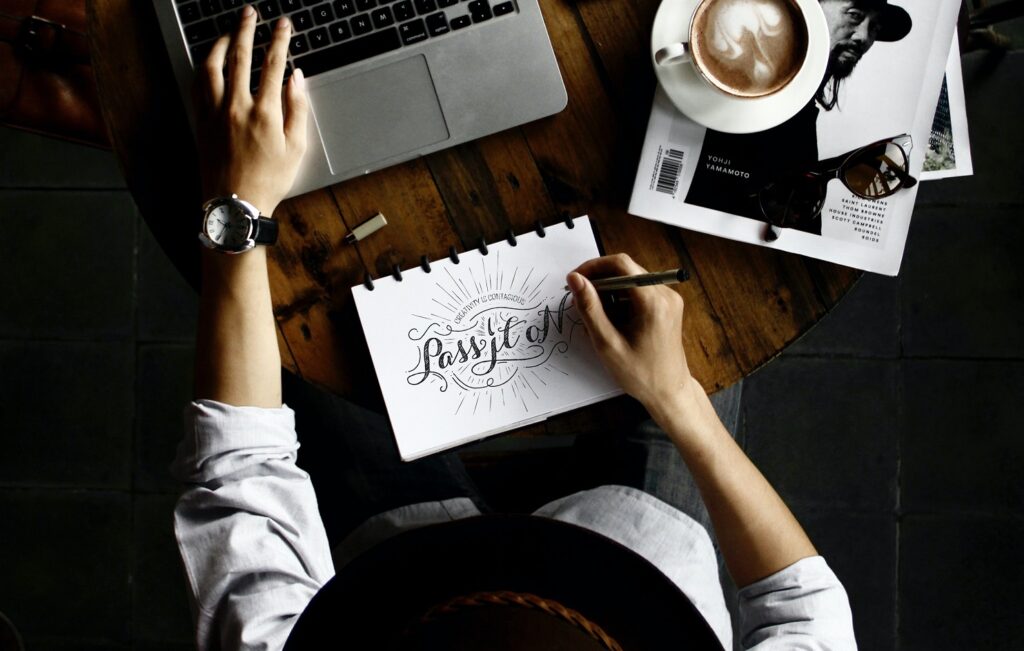Logo design is an essential part of any business or organization. A well-designed logo can help to create a strong brand identity and communicate important messages to customers. However, creating an effective logo requires careful planning and execution. One of the most critical steps in the logo design process is sketching.
Sketching is the process of drawing rough ideas and concepts before creating the final design. Sketching is essential for logo design because it allows designers to explore different ideas and experiment with different concepts. Now, let’s discuss the importance of sketching for logo design and explore the benefits that sketching can provide.
Exploring Ideas
The first benefit of sketching for logo design is that it allows designers to explore different ideas. Sketching provides a platform for brainstorming and encourages designers to think outside the box. When sketching, designers can freely experiment with different shapes, colors, and typography to come up with the most creative ideas. Sketching also enables designers to evaluate different ideas quickly and determine which concepts work best.
Developing Concepts
Sketching is also essential for developing concepts. By sketching, designers can flesh out their ideas and determine how they might work in practice. Sketching allows designers to experiment with different layouts, compositions, and design elements, giving them a better understanding of how different concepts might work in different contexts. Sketching also allows designers to identify potential design problems and find solutions before they become more significant issues.
Saving Time and Money
Another advantage of sketching for logo design is that it can save time and money. By sketching out different ideas, designers can quickly eliminate concepts that don’t work, saving them from investing too much time and resources in ideas that won’t make the final cut. Sketching also allows designers to work more efficiently, as they can quickly iterate on different concepts and refine their ideas without having to create multiple high-fidelity designs.
Collaboration and Communication
Sketching is also a valuable tool for collaboration and communication. By sketching out different ideas, designers can easily share their concepts with other team members, allowing them to provide feedback and suggestions. Sketching also allows designers to communicate their ideas more clearly, as sketches can help to illustrate design concepts more effectively than words alone. Sketching can also help to ensure that everyone is on the same page, reducing the risk of misunderstandings and miscommunications.
Creative Freedom
Finally, sketching is essential for providing creative freedom. By sketching, designers can let their imaginations run wild, exploring different concepts and ideas without worrying about the constraints of the final design. Sketching provides a low-stakes environment for creativity, allowing designers to experiment with different design elements and try out new techniques without fear of failure. By providing creative freedom, sketching can help designers create logos that are truly unique and innovative.
It’s worth noting that sketching doesn’t have to be a perfect art form. In fact, the point of sketching is to allow for rough ideas and imperfect concepts. A sketch doesn’t have to be a detailed, high-quality rendering of a final design. Instead, it’s an opportunity to get ideas down on paper, explore possibilities, and find inspiration.
One of the advantages of sketching is that it doesn’t require expensive software or tools. All you need is a pencil and paper, or a tablet and stylus, to get started. And once you have a few rough sketches, you can scan or photograph them and share them digitally with colleagues or clients.
Another benefit of sketching is that it can be done anywhere, at any time. You don’t need to be at your desk or have a computer handy to sketch out ideas. Sketching can be done on the go, whether you’re commuting to work, waiting in a coffee shop, or traveling on a plane.
Of course, sketching is just one part of the logo design process. Once you have a few promising concepts, it’s time to refine and develop them into high-fidelity designs. But sketching provides a solid foundation for the rest of the design process, allowing you to explore ideas, work efficiently, and communicate your concepts more effectively.
In addition to sketching, there are other important factors to consider when designing a logo. One key consideration is brand identity. A logo is a visual representation of a brand, and it’s important to ensure that the logo reflects the values and personality of the brand. A well-designed logo can help to build trust and credibility with customers and create a sense of familiarity and recognition.
Another important factor to consider is simplicity. A simple logo can be more effective than a complicated one, as it’s easier for customers to recognize and remember. A simple logo can also be more versatile, as it can be used in a variety of contexts and across different mediums.
Sketching is an essential part of logo design. By exploring ideas, developing concepts, saving time and money, facilitating collaboration and communication, and providing creative freedom, sketching can help designers create logos that are effective, efficient, and truly unique. Whether you’re a seasoned logo designer or just starting, incorporating sketching into your design process can help you create logos that stand out and make a lasting impression.
